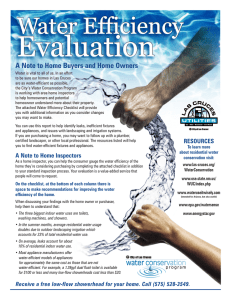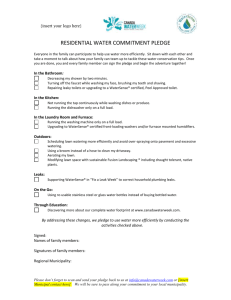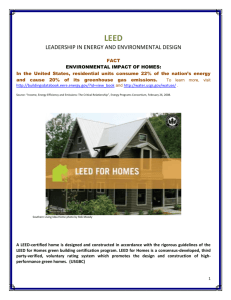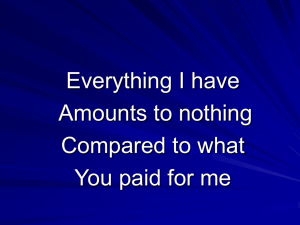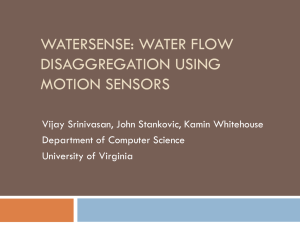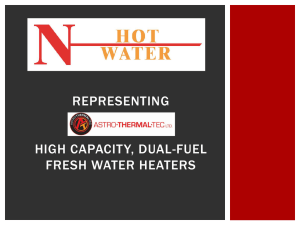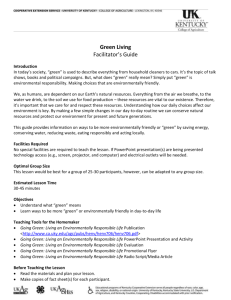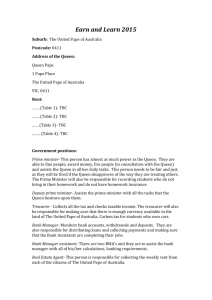Audits and Green Codes - Great Lakes Water Conservation
advertisement
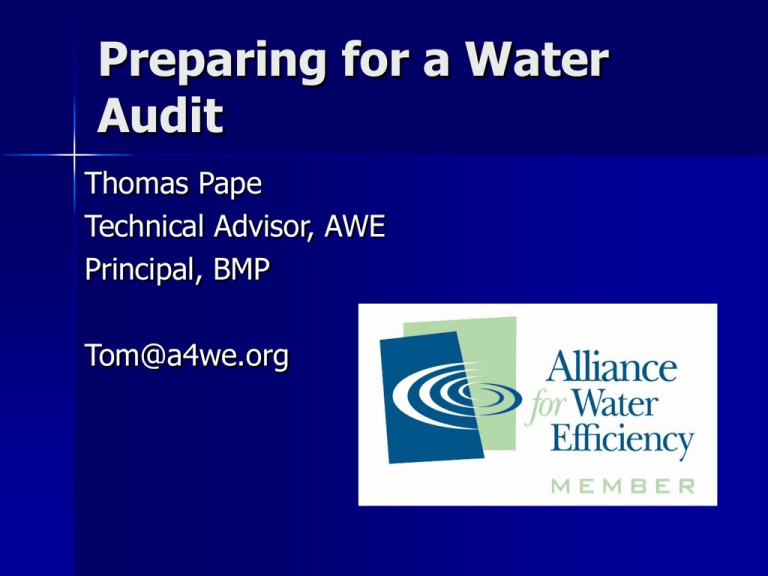
Preparing for a Water Audit Thomas Pape Technical Advisor, AWE Principal, BMP Tom@a4we.org Maximize Auditor Productivity and Minimize Cost Pre-notify and Provide Access to Experts – Facility Managers – Bill Payer – Cooling Tower Operators – Production Managers (activities that affect water use) – Supervisors where significant water is used – Key holders Prepare and Access Records Consumption Histories Location of Water Meters Tie water meters (accts.) to buildings, uses, operations Sub-meters on major uses Production history (?) Equipment change history List of Expectations Previous efficiency measures and activities Planned or facility changes Acceptable ROI parameters Motivations for audit Benefit/Cost analysis Preferred and non-preferred retrofits Green Building Codes: Improving Water Efficiency Thomas Pape Technical Advisor, AWE Principal, BMP Tom@a4we.org Why are codes needed? Standards only address the product itself; not how, when and where it is installed. WaterSense is voluntary program Federal standards are not based on local conditions Rebates, vouchers and distributions can be costly Role of Codes Codes do not replace: standards, ordinances, EPAct, WaterSense, vouchers, rebates, distributions …. Codes enhance the overall strategy of water efficiency IAPMO Green Plumbing & Mechanical Code Supplement ICC International Green Construction Code Supplements existing code, not stand alone code Most compatible to own family of codes, but not exclusive Very Comprehensive: Plumbing, HVAC, Appliances, Alternate water sources Residential (some) and non-residential Limited irrigation provisions Key Differences ICC Green IAPMO Green All residential and non-residential Prescriptive based water efficiency Easy to implement, inspect and enforce 1st Edition available Only high-rise residential and nonresidential Performance based water efficiency options Offers flexibility to builders & JHA In-progress Sanitary Fixtures Faucets – 0.5 to 1.5 gpm Showerheads – 2.0 gpm/1800 ft2 Toilets – tank 1.28 gpf*; flushometer 1.6 gpf *Non-commercial Appliances Energy Star WaterSense Water Softeners – Use limits – Discharge water efficiency Water Pressure 65 psi maximum (domestic uses) Commercial Kitchens Icemakers > 50% water efficiency Food Steamers < 2 gal/hr Combo ovens <10 gph Dipper wells (in-progress) Medical and Laboratory No water tempering for sterilizers X-ray process requires recycling Exhaust hood scrubber - H2O recirculation required Sub-meters Required Irrigated landscape Cooling towers Boilers Each building Each tenant space Processes using > 1,000gal/day Alternate Water Sources Gray Water Reclaim Water Rainwater Condensate recovery Discharge water re-use Hot Water Distribution Limiting cold water purge to 32 oz Pipe insulation on HW pipes More Information Alliance for Water Efficiency a4we.org Tom@a4we.org Thomas Pape bmp4h2o@aol.com 510-325-7308
